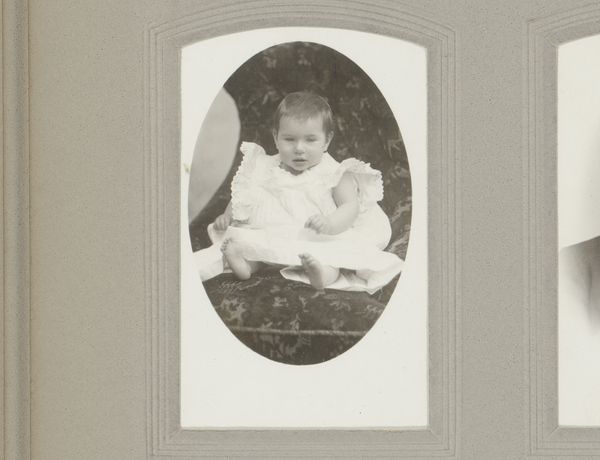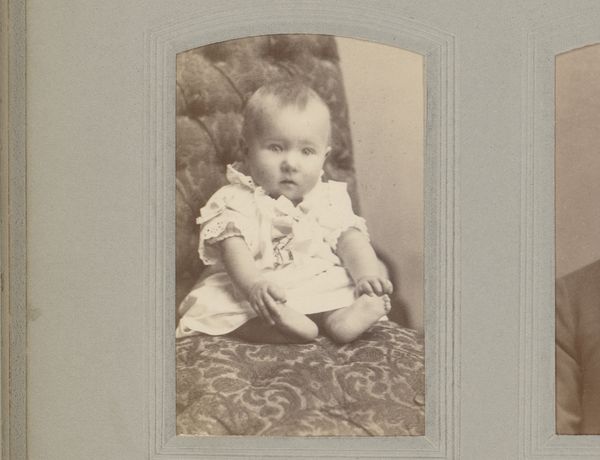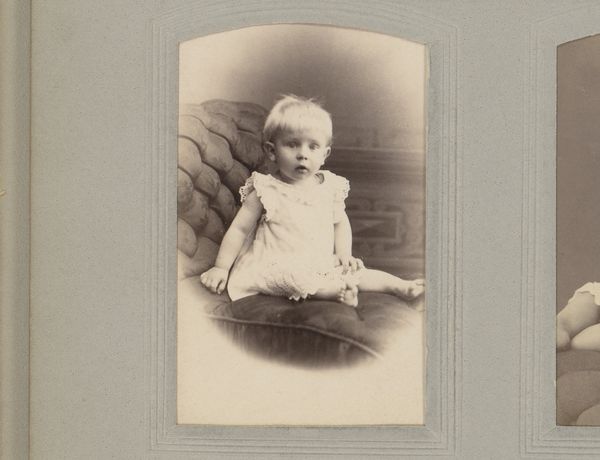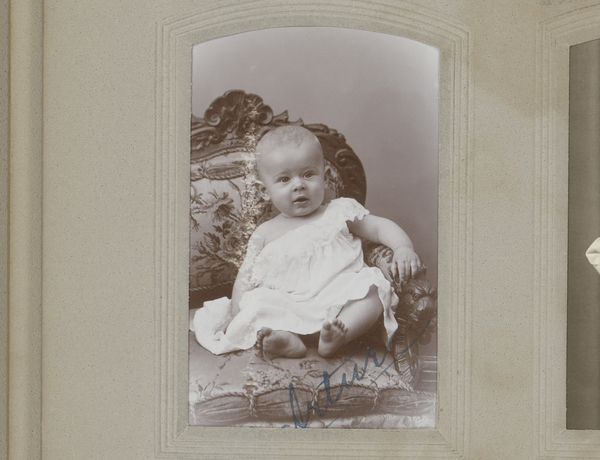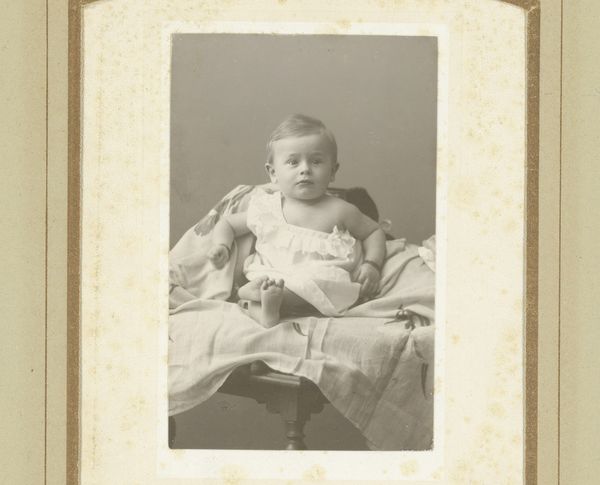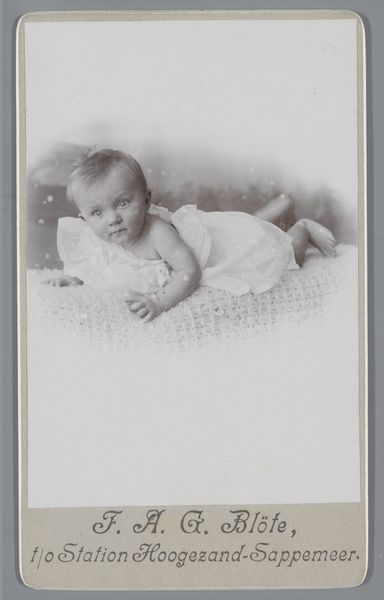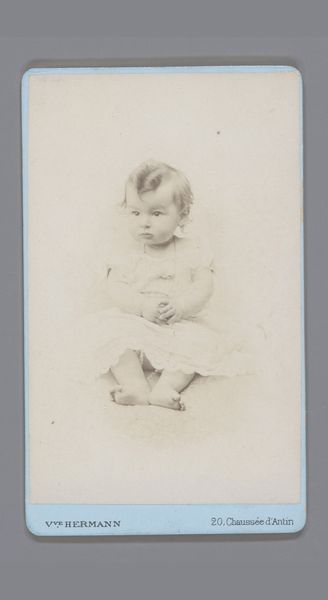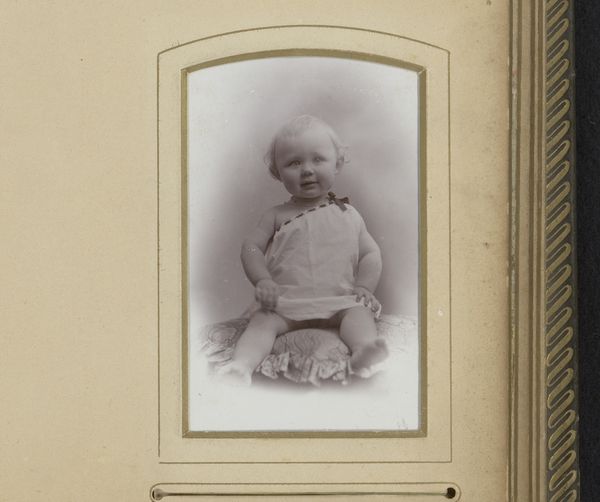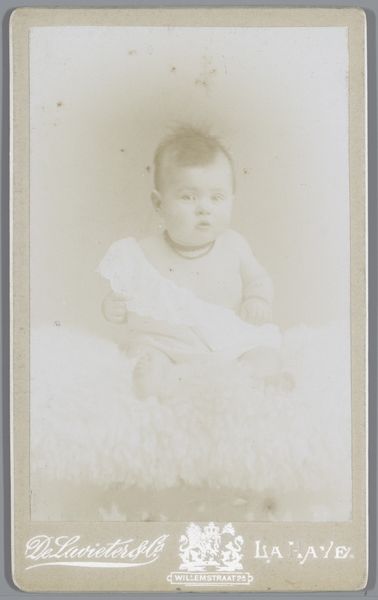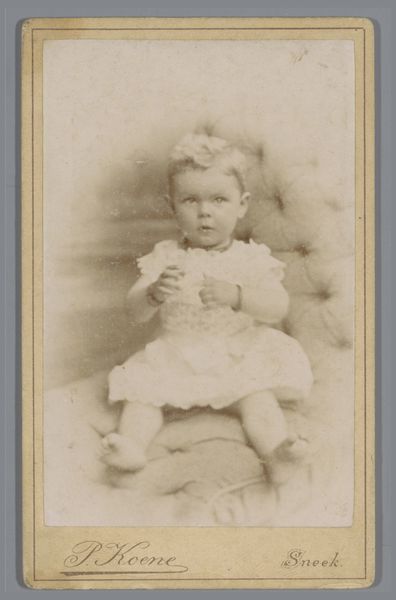
photography, gelatin-silver-print
#
portrait
#
still-life-photography
#
photography
#
gelatin-silver-print
#
genre-painting
#
realism
Dimensions: height 83 mm, width 51 mm
Copyright: Rijks Museum: Open Domain
Curator: Here we have a photograph, tentatively titled "Portret van een zittende baby in witte jurk," dating from sometime between 1880 and 1920. The photographer is identified as And. Brattström. It is a gelatin-silver print, showcasing a seated baby. Editor: My first impression is one of vulnerability. The high contrast and stark presentation accentuate the delicate nature of the subject, posed formally yet seemingly overwhelmed by its attire. What sort of setting and resources would allow for the labor of producing such formal attire for an infant, I wonder. Curator: Absolutely. White, in many cultures, carries connotations of purity and innocence, reinforced by the baby's somewhat wide-eyed and unblemished countenance. We often see these types of presentations, echoing iconography across different visual and written histories for this cultural ideal. Editor: And let's consider the gelatin-silver print itself, which replaced earlier processes because of its efficiency. The proliferation of these types of studio baby portraits, coincided with larger social shifts that emphasized idealized nuclear family settings in Western industrialized contexts, further impacting the domestic labor and the economics of reproduction. Curator: Very insightful. It highlights the photograph not just as a document, but as an artifact deeply embedded within specific historical conditions and production processes. Think too about the fact that gelatin-silver prints created a reproducible object that made imagery far more widely available in personal settings than ever before, reinforcing idealized types within those domestic spaces. Editor: Precisely, and while the image may seem innocent on its surface, understanding the materials and production tells a different story: the intersection of new industrial practices, rising bourgeois culture, and specific social mores influencing the very perception – and photographing – of childhood itself. Curator: Thank you, by bringing this analysis to light, the material of this portrait encourages us to reflect not just on this little human, but all of the larger social factors behind the image's creation, and its persistence over time. Editor: Exactly, it serves as a tangible reminder that what we see, what we photograph and how we do so are inevitably steeped in history and power.
Comments
No comments
Be the first to comment and join the conversation on the ultimate creative platform.
